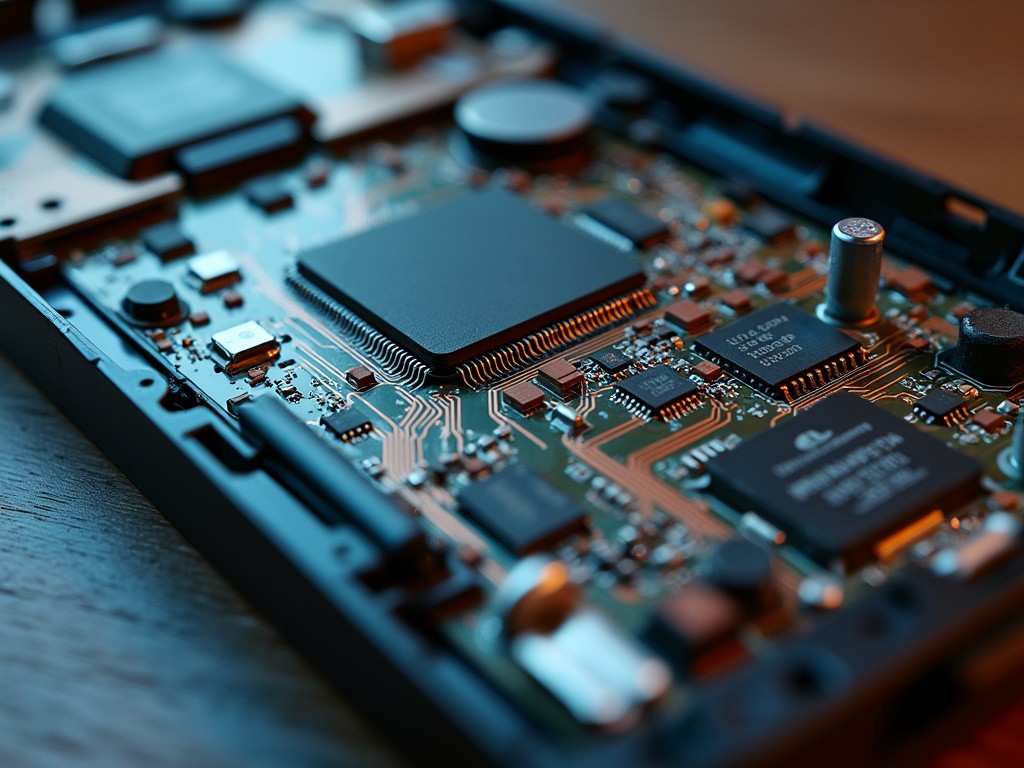Printed Circuit Boards (PCBs) are at the core of nearly all electronic devices, providing a foundation for components to interact. To understand how these systems work, it’s essential to learn about the components that make them function. In this beginner’s guide, we’ll explore the key components of a PCB, their roles, and why they’re crucial to circuit design. OurPCB, a leading manufacturer, not only offers detailed insights on PCB components but also provides PCB manufacturing and assembly services, including prototyping and full-scale production.
What is a PCB?
Before diving into the components, let’s quickly recap what a PCB is. A PCB is a board made of non-conductive materials, typically fiberglass, which holds and connects electronic components. The copper tracks on the board form circuits, allowing electricity to flow between the components, effectively making the PCB the foundation of any electronic device.
1. Resistors
One of the most basic components in a PCB is the resistor. Resistors control the flow of electrical current, ensuring that other components receive the correct amount of voltage. Without resistors, too much current could cause components to overheat or become damaged.
How Resistors Work: Resistors limit current by offering resistance, measured in ohms (Ω). They come in various types, such as carbon film, metal oxide, or wire-wound, each with different applications and levels of tolerance. In a PCB, resistors are often color-coded to indicate their resistance value.
2. Capacitors
Capacitors are used to store and release electrical energy. They are critical in stabilizing the voltage supply in a circuit and are often placed near the power source or high-frequency components to smooth out voltage fluctuations.
Types of Capacitors: There are several types of capacitors used in PCBs, including ceramic, electrolytic, and tantalum capacitors. The choice of capacitor depends on the specific needs of the circuit, such as the required capacitance and voltage rating.
3. Diodes
Diodes are components that allow current to flow in only one direction. Their main purpose is to protect other components by preventing reverse current, which could potentially damage the circuit.
Common Types of Diodes:
- Standard diodes: Used in rectification and power conversion circuits.
- Light Emitting Diodes (LEDs): A special type of diode that emits light when current flows through it.
- Zener diodes: Designed to allow reverse current when a specific voltage threshold is reached, often used in voltage regulation.
4. Transistors
Transistors are the building blocks of modern electronic circuits, used to amplify or switch electronic signals. They are typically used in logic circuits, power regulation, and amplification tasks.
Types of Transistors:
- Bipolar Junction Transistor (BJT): Common in analog circuits.
- Field Effect Transistor (FET): Widely used in digital circuits.
Transistors can function as a switch, turning components on or off, or as an amplifier to increase the strength of a signal.
5. Inductors
Inductors store energy in a magnetic field when current flows through them. They are mainly used in filtering applications, such as in power supplies, to smooth out fluctuations in the current.
How Inductors Work: Inductors resist changes in current, which makes them useful for filtering high-frequency noise from signals and providing stable current flow in sensitive electronic circuits.
6. Integrated Circuits (ICs)
Integrated circuits (ICs) are tiny electronic circuits that contain multiple components like transistors, resistors, and capacitors, all packaged into a single chip. ICs are essential in complex devices, performing a wide variety of tasks, such as signal processing, data storage, and logic operations.
Examples of ICs:
- Microcontrollers: Small computers on a chip that control devices such as home appliances.
- Operational Amplifiers (Op-Amps): Amplify voltage in analog circuits.
- Digital ICs: Perform logical operations in devices like computers and smartphones.
7. Sockets and Connectors
Sockets and connectors are vital for linking PCBs to external devices or other PCBs. They provide a secure way to transfer signals, power, or data between different parts of a device.
Common Connectors:
- Pin headers: Used for connecting components to a PCB.
- USB connectors: Allow data transfer between the PCB and external devices.
- Power connectors: Provide power to the PCB from an external power source.
8. Switches
Switches are manual or automatic components that can open or close a circuit, controlling the flow of electricity. They are commonly found in user interfaces like buttons or toggles and serve as simple but essential controls in a wide range of devices.
9. Quartz Crystals
Quartz crystals are used to maintain precise timing in electronic circuits. They create a stable clock signal that ensures components operate in sync, which is particularly important in devices like watches, computers, and communication systems.
10. Heat Sinks
PCBs often generate heat, especially in power-intensive applications. Heat sinks are components that dissipate heat away from sensitive areas of the PCB, preventing components from overheating and malfunctioning.
How Heat Sinks Work: A heat sink is made from materials that are excellent at conducting heat, such as aluminum or copper. It increases the surface area available for heat dissipation and often relies on airflow to remove heat from the board.
Conclusion
PCBs are intricate but fascinating systems where various components work together to make modern electronics function. Understanding the basic components of a PCB—resistors, capacitors, diodes, transistors, inductors, ICs, connectors, and more—can help you grasp the fundamentals of electronic circuit design and troubleshooting.
By learning about these components and how they function within a PCB, you’ll be well on your way to understanding the basics of electronics and circuit design. As you progress, you’ll also discover how these components come together to create the complex devices we use daily.



